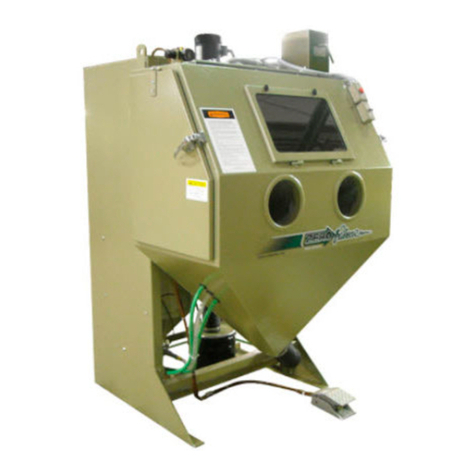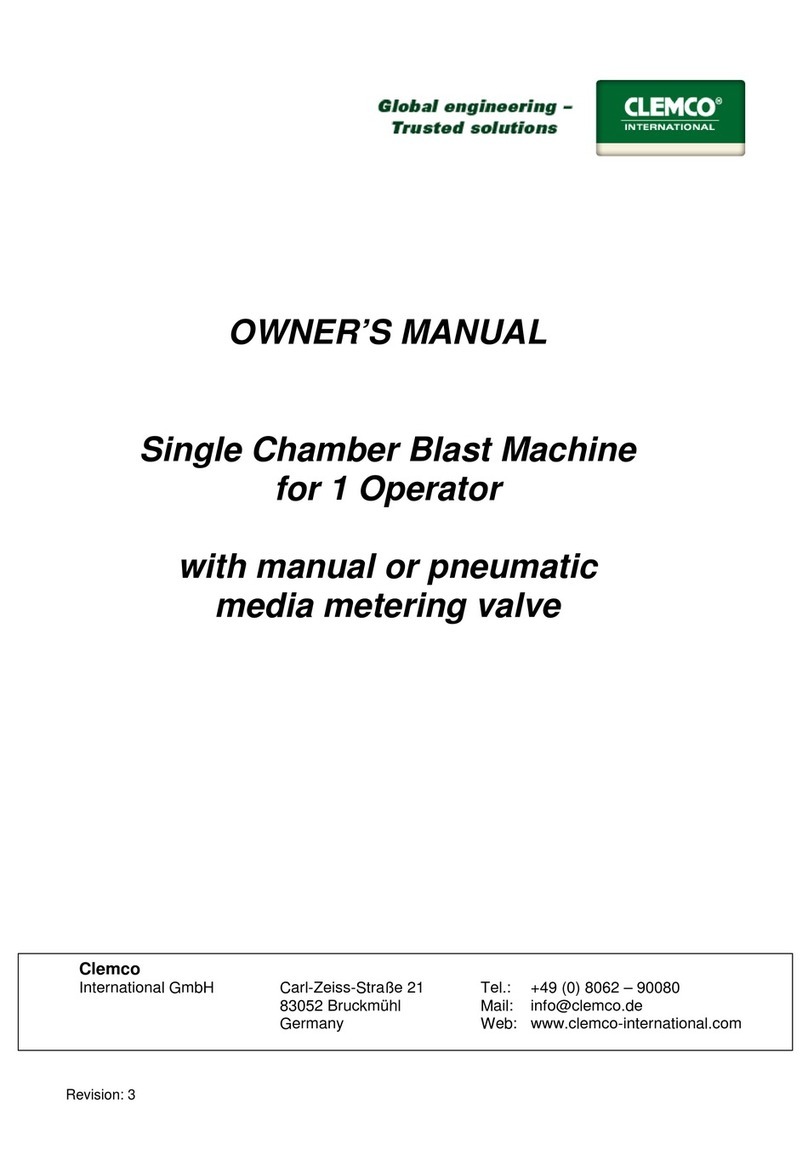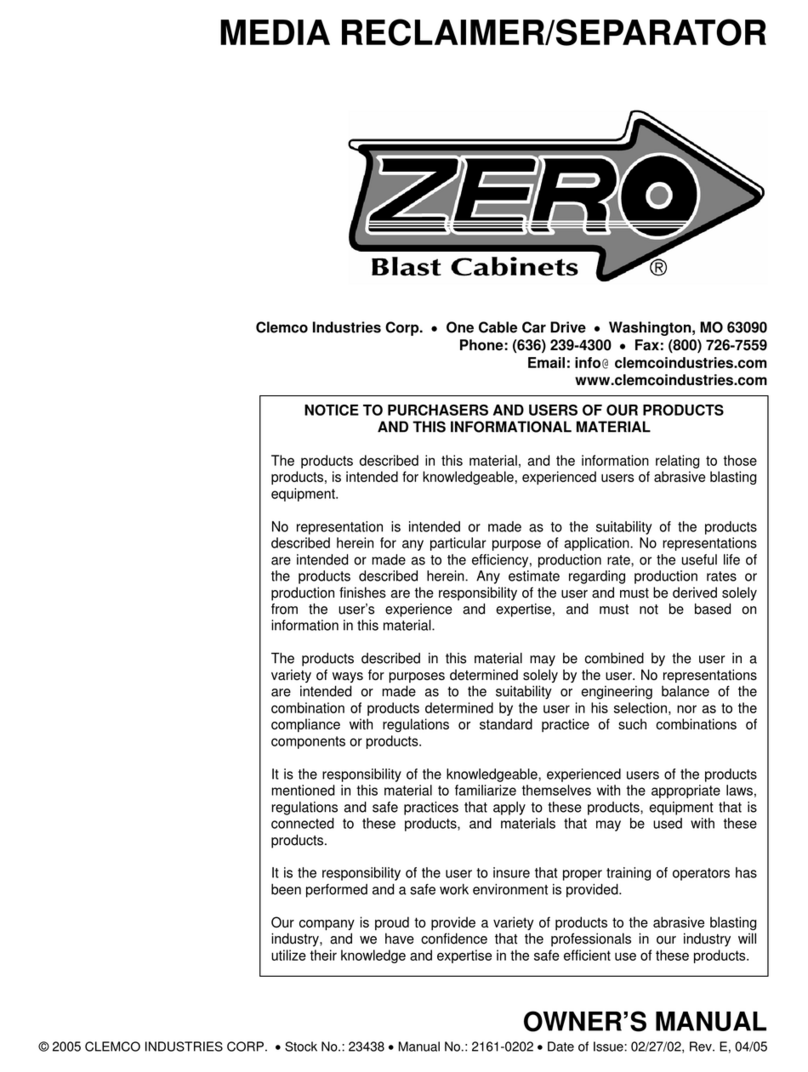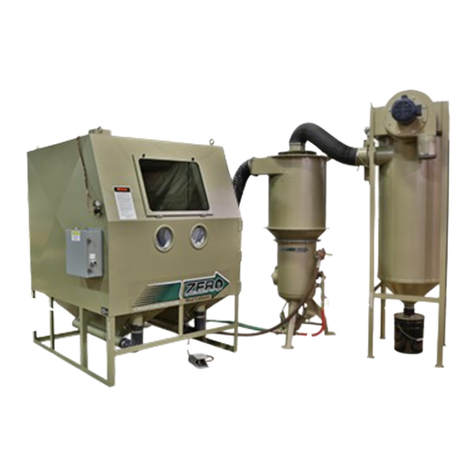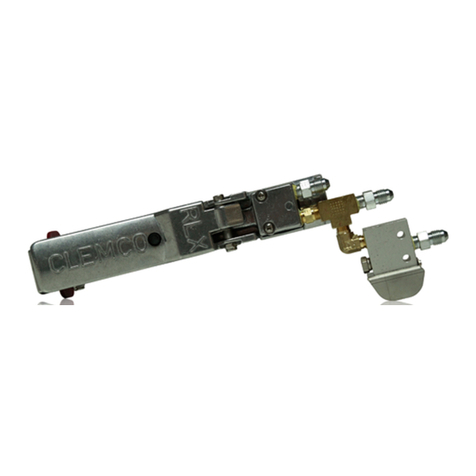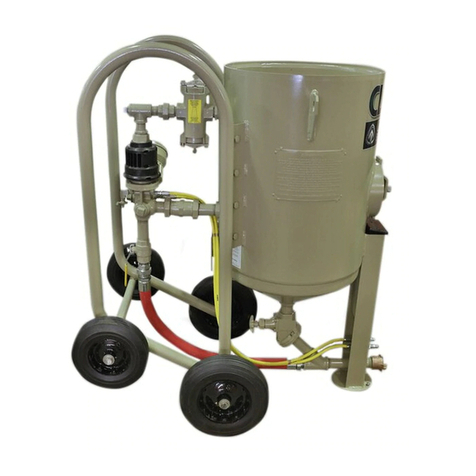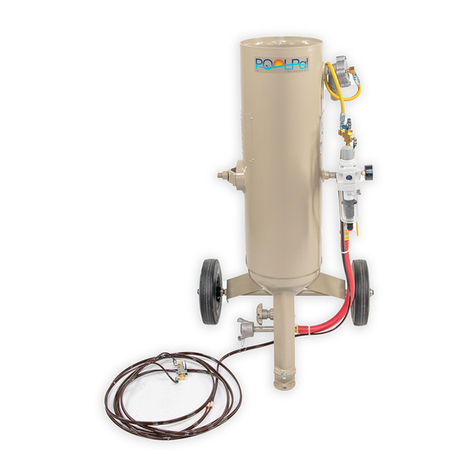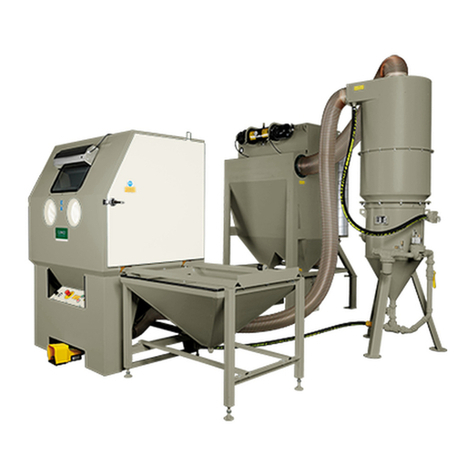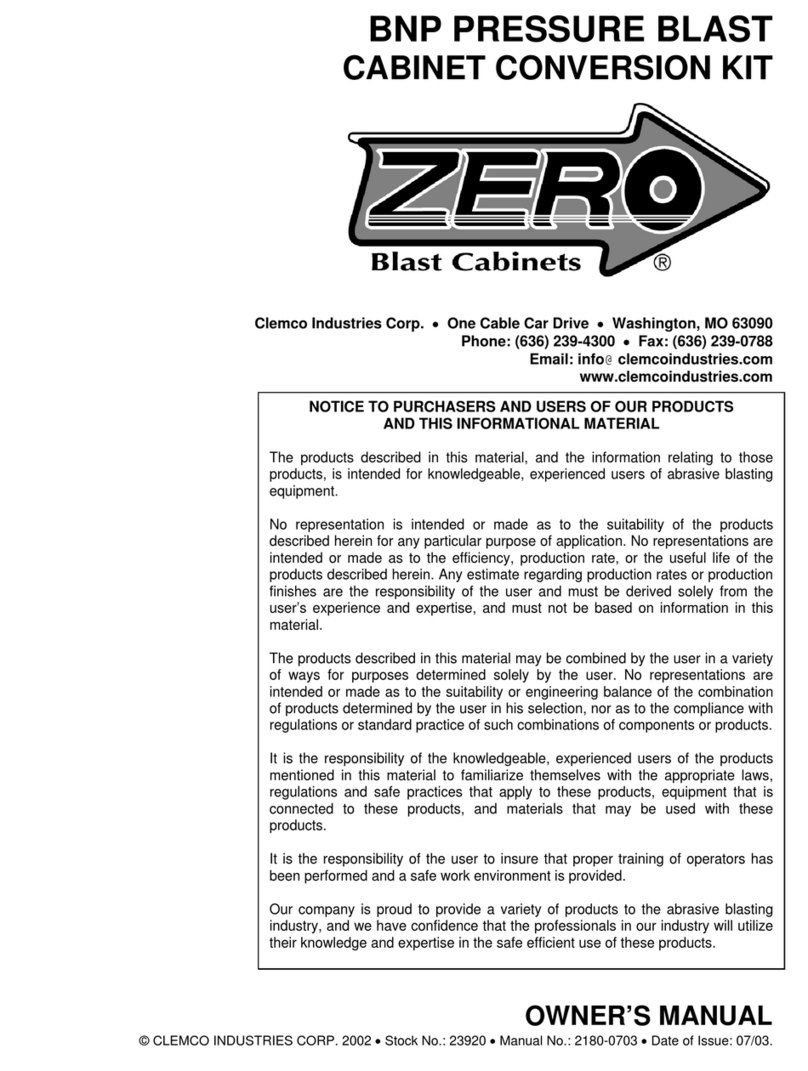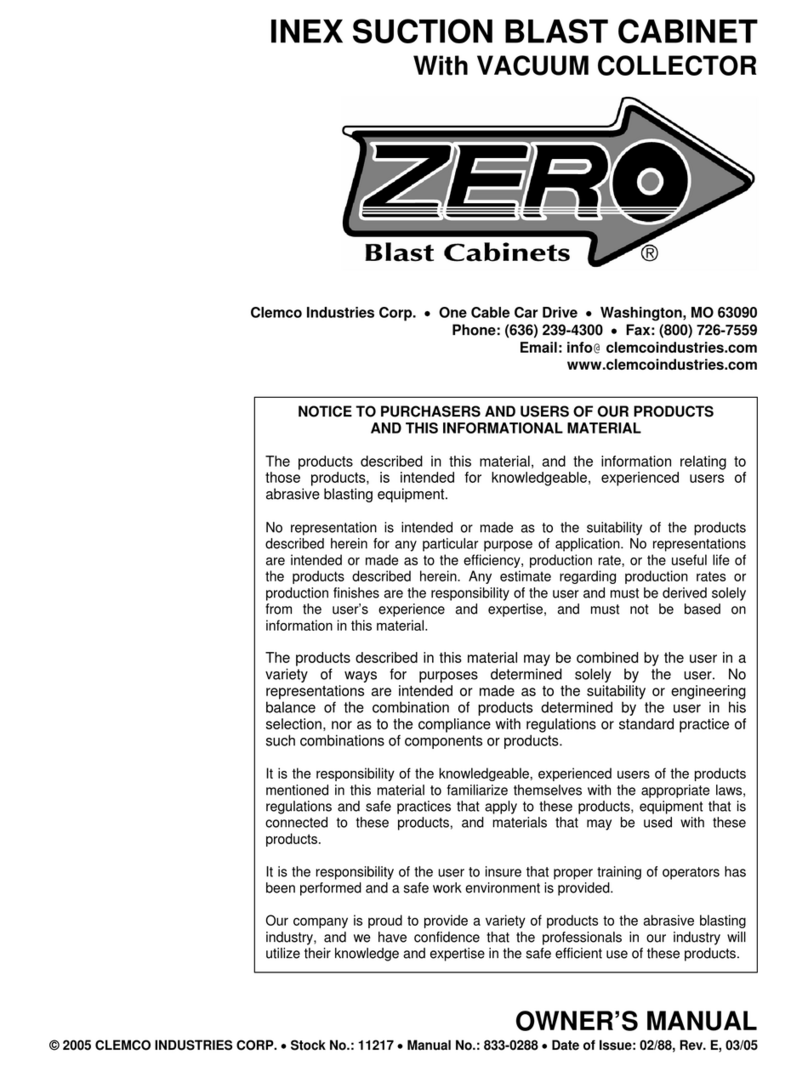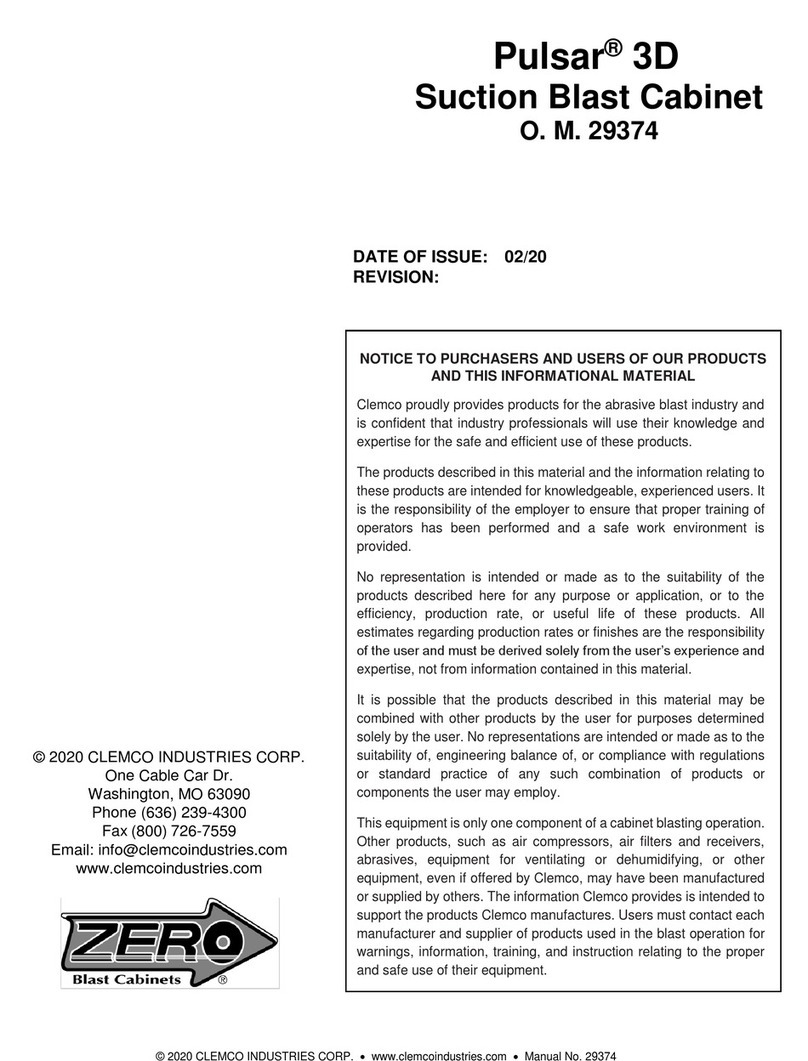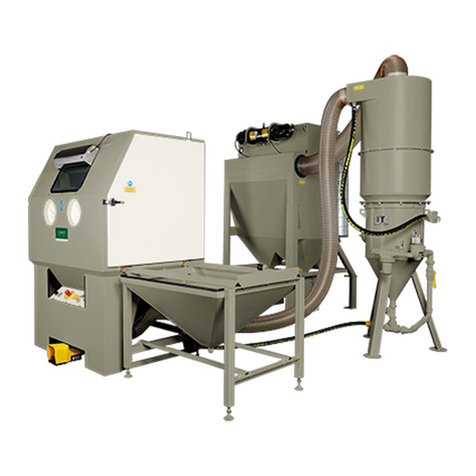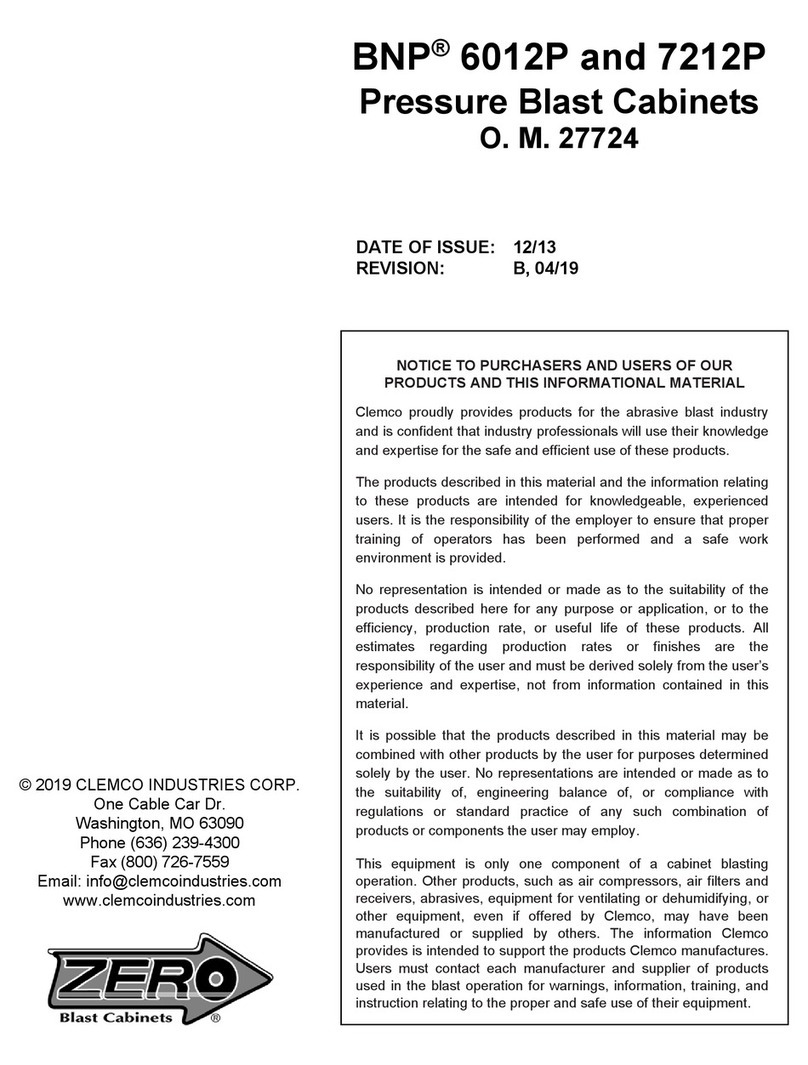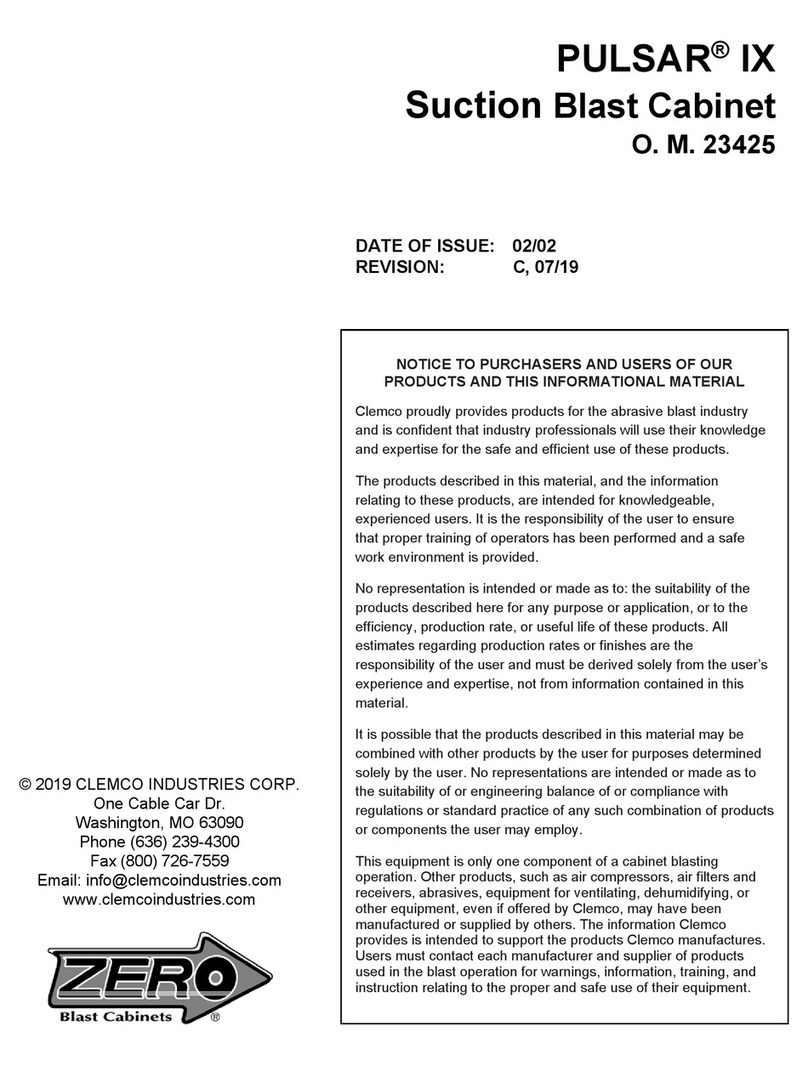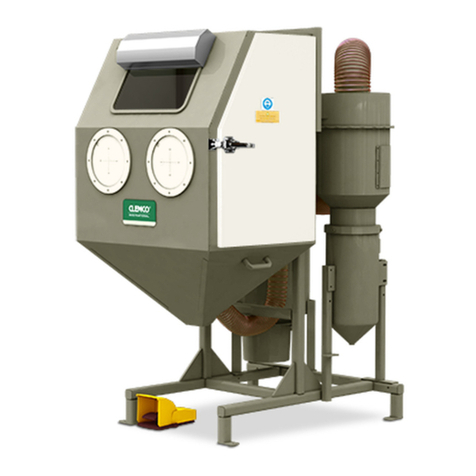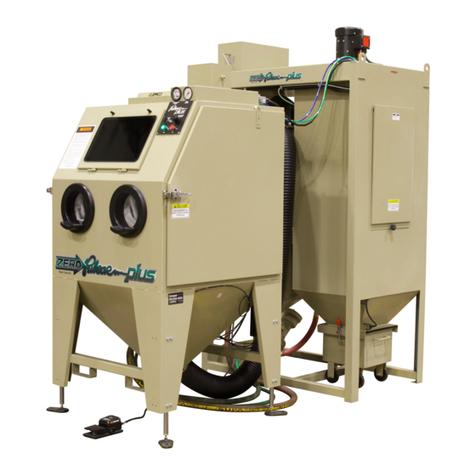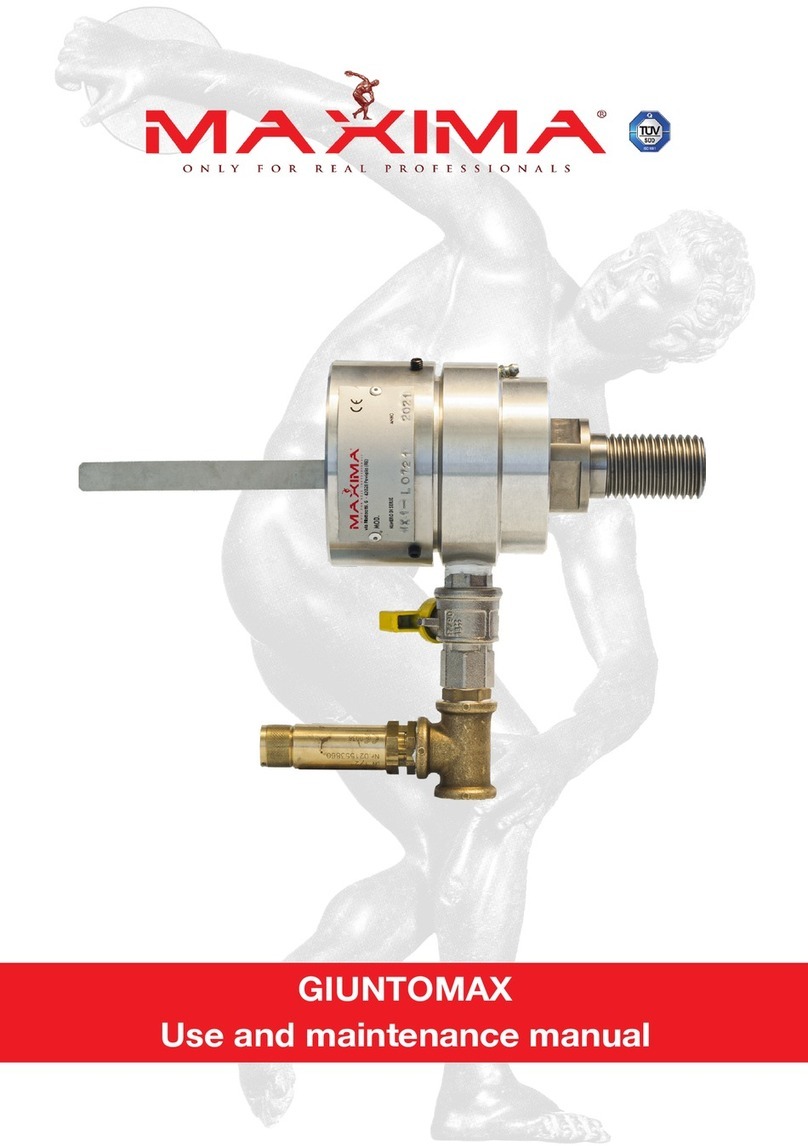
BNP 65P and 220P PRESSURE BLAST CABINETS Page 4
© 2016 CLEMCO INDUSTRIES CORP. www.clemcoindustries.com Manual No. 21278, Rev. H, 08/16
have a removable top and are designed to accept liners.
Reclaimer liners are shown in Section 9.1, Figure 30.
1.8 Nozzle Options
1.8.1 Unless otherwise specified at the time of
purchase, cabinets are shipped with a 3/16" orifice
tungsten carbide nozzle. Optional 1/8" orifice nozzles are
available for use with all cabinets, and 1/4" orifice nozzles
are for use with 900 cfm reclaimers only.
1.8.2 Nozzles with an orifice larger than those
recommended could cause air leakage from the cabinet
and impair recovery from the cabinet hopper.
1.8.3 Use boron carbide nozzles when blasting with
aggressive media, as noted in Section 1.10.4. Nozzles
lined with boron carbide extend nozzle wear life. Refer to
Optional Accessories in Section 9.1.
1.9 Metering Valve Options
1.9.1 Unless specified at the time purchase, cabinets
are supplied with a fine-mesh Sentinel metering valve.
The valve is for use with 50-mesh and finer media, and
#10 and finer glass bead. The optional Sentinel
metering valve is recommended when using media
coarser than 50-mesh. Conversions kits listed in Section
9.1 easily convert the valves.
1.10 Blasting Media
WARNING
Obtain Safety Data Sheets (SDS) for the blast
abrasive. Abrasive blasting with sands
containing crystalline (free) silica can lead to
serious or fatal respiratory disease. As NIOSH
recommends, do not use abrasives containing
more than trace amounts (more than one
percent) free silica.
NOTE: Use only abrasives specifically manufactured for
blast cleaning which are compatible with the surface
being blasted. Abrasive produced for other applications
may be inconsistent in size and shape, contain particles
that could jam the abrasive metering valve, or cause
irregular wear.
1.10.1 ZERO pressure blast cabinets utilize most
common reusable media, with the appropriate metering
valve as noted in Paragraph 1.9, specifically
manufactured for dry blasting. Media sizes listed are
guidelines only, based on standard 3/16orifice nozzle
and average conditions, such as blast pressure, media/air
mixture, visibility inside the cabinet, humidity, and
reclaimer cleaning rate. Refer to the table in Figure 3.
Several factors affecting the reclaimer cleaning rate
include: reclaimer size (cfm), blast pressure, media/air
mixture, media friability, contamination of parts being
cleaned, damper setting (static pressure), and dust
collector filter loading (differential pressure across the
filter cartridge(s).
As a rule, larger nozzles deliver more media, thus
requiring more performance from the reclaimer. When
using larger nozzles, the maximum mesh size of media
will be smaller than those normally recommended.
Using media that is finer than those recommended may
decrease visibility and, at some point, carryover to the
dust collector. Media coarser than those recommended
may be too dense for the reclaimer to recover from the
cabinet hopper.
1.10.2 Steel and Shot: Standard cabinet models
configured for steel media use are available. They include
appropriately sized conveying hose and rubber curtains to
protect the cabinet walls from peening and rapid wear.
Using steel media requires a smaller diameter conveying
hose (usually reduced one size from standard) and a 900
cfm or larger reclaimers. Rubber curtains should be used
to protect the cabinet walls from peening and rapid wear.
NOTE: Steel grit or shot is too heavy to use with cabinets
equipped this 300 and 600 cfm reclaimers.
1.10.3 Sand and Slag: Sand should NEVER be used
for abrasive blasting because of the respiratory hazards
associated with media containing free silica. Slags are
not recommended because they rapidly breakdown and
are not recyclable, making them unsuitable for cabinet
applications.
1.10.4 Silicon Carbide, Aluminum Oxide, and
Garnet: These are the most aggressive of the
commonly-used media. Aggressive media may be used,
but the service life of any components exposed to the
media will be reduced. To avoid unscheduled down
time, periodically inspect the reclaimer wear plate, blast
hose, and nozzle for wear.
When using aggressive media only occasionally, install
an optional aluminum oxide kit. The kit includes rubber
curtains for the cabinet interior and a boron carbide-lined
nozzle. When using aggressive media on a regular basis,
install the aluminum oxide kit and a fully-rubber-lined
reclaimer. NOTE Rubber-lined reclaimers are available as
factory-installed items and can be field installed on
reclaimers if they have removable tops and designed to
accept liners. Nozzles lined with boron carbide extend
nozzle wear life. See Optional Accessories in Section 9.1.
1.10.5 Glass Bead: Most beads are treated to ensure
free-flow operation even in environments of moderately
high humidity. Glass beads subjected to excessive
moisture may be reused only after thorough drying and
breaking up any clumps.
